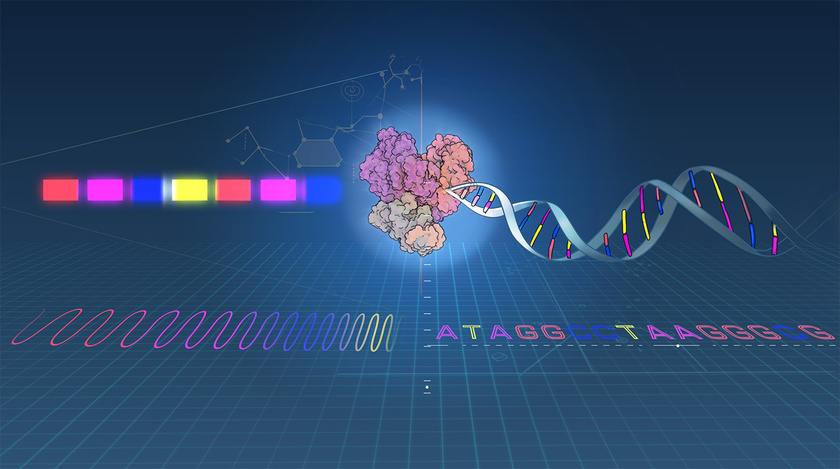Metaverse has become a popular term among crypto enthusiasts. The idea of creating a digital world where people can have and ideally interact with others has grown significantly. Even big industries like Meta Platforms have embraced this idea today. The Metaverse is constantly becoming popular, and more development is being done within the space to test the further limits of Web3 technology. In this article, we will talk about 20 metaverse coin projects that should be followed in 2023 according to expert Alden Baldwin. Here are the details…
Favorite metaverse coin projects for 2023
ApeCoin (APE)
The first metaverse coin on the list was APE. ApeCoin is the native token used for governance and utility purposes in the APE ecosystem. After the sensational Bored Ape Yacht Club project, the APE ecosystem took important steps to take the Metaverse concept to higher heights. Yuga Labs' success with the Bored Ape Yacht club has also spilled over into ApeCoin, a metaverse token designed to allow governance of the APE ecosystem. ApeCoin is a way to manage the ApeCoin DAO Ecosystem Fund by specifying how the funds should be used. Voting rights are obtained by holding ApeCoin, ERC-20 governance tokens in the APE ecosystem.

Decetraland (MANA)
Decentraland is one of the popular Metaverse platforms. Decentraland is a virtual reality platform running on the Ethereum ecosystem. Decentraland's popularity has soared with the growing interest in Metaverse coin projects. The Decentraland platform mainly used two tokens, MANA and LAND. MANA is an ERC-20 token while LAND is an ERC-721 (NFT) token. The two tokens are crucial to the success of the Decentraland project. The Decentraland platform allows creatives to create and monetize content on the platform.
The Sandbox (SAND)
The Sandbox platform was launched by Pixowl in 20211. The platform extensively explores Web3 possibilities while promoting the development, creation and sale of crypto assets on its platform. Since then, Sandbox has continued to evolve its platform to ensure sustainability and efficiency for its users. The Sandbox platform focuses on the gaming community by combining the power tools of Decentralized Autonomous Organizations (DAOs) and NFTs.

Axie Infinity (AXS)
Axie Infinity is a unique blockchain project that includes the unique selling points of Blockchain and Web3 technology. The platform works by having users trade NFT-based creatures known as Axies. So users interact by collecting, upgrading, fighting and crafting NFTs . Various variations of Axies with several body parts add to the wide variety of options available on the platform. AXS is the governance token for the Axie Infinity platform. AXS stands for Axie Infinity Shards. By holding the token, you have the privilege of determining the direction of the organization through a voting system.
🌐Theta Network (THETA)🌐
Theta Network is a revolutionary blockchain project that aims to disrupt the video streaming industry. The network draws on the advice of Steve Cheng and Justin Kan, two industry-proven professionals who are the co-founders of Youtube and co-founders of Twitch, respectively. The ability to associate themselves with verifiable and trusted industry professionals increases their credibility. The platform has its own native cryptocurrency known as THETA . Theta is primarily used to run governance tasks around the Theta metaverse ecosystem.

Enjin Coin (ENJ)
Enjin Coin provides blockchain-based solutions to the online gaming industry. ENJ is part of the Enjin ecosystem. The main Enjin network is a robust Blockchain network platform that allows users to create websites. Interaction with the social gaming platform allows users to host virtual items on the platform. The platform allows developers to tokenize assets in the metaverse. The continuous trading of these digital assets increases the overall effectiveness of the platform, making it beneficial for both ENJ metaverse coin holders and developers on the Enjin network.
Stacks (STX)
Stacks is an innovative layer 1 blockchain project that aims to elevate the technical potential of Bitcoin . Layer 2 blockchain projects have addressed several limitations to the Bitcoin network. Stacks projects aim to enable the Bitcoin network to use smart contracts and other decentralized applications (DApps). The Stacks platform aims to enhance the capabilities of the Blockchain network by accelerating the execution of smart contracts. Similarly, the platform facilitates the registration of new crypto assets and efficient transaction processing on the Stacks 2.0 Blockchain.

Zilliga (ZIL)
The Zilliqa platform is a unique blockchain platform known for its ability to complete multiple transactions faster per second. The platform brings efficiency to the blockchain world with its ability to complete thousands of transactions in seconds. Today, the Zilliqa platform achieves an impressive throughput as it should. The platform's ability to process a few transactions per second makes it the network of choice for large businesses.
WAX (WAXP)
WAX is an e-commerce focused blockchain technology developed to improve the efficiency of transactions in the e-commerce space. Blockchain ecosystem allows for faster transactions between sellers and buyers. WAX is fully compatible with the Entrepreneurial Operating System (EOS), making it highly scalable and applicable in a variety of situations in the e-commerce space. The ecosystem enables innovative developments in the e-commerce industry by fostering the development of blockchain tools that support DApps.
Ontology (ONT)
Ontology is a Web3 project developed to strengthen the privacy, security and trust of Web3 technology. The Web 3 project plans to incorporate decentralization into data processing to ensure the security and privacy of Web 3 projects. Ontology enables the organization of digital identity data to ensure the trust of businesses and individuals. The platform demands compliance from all parties to ensure that digital identification is handled seamlessly.

PlayDapp (PLA)
PlayDapp is a blockchain platform focused on games. The PLA token is the native token of the PlayDapp gaming blockchain that allows players to buy and sell crypto assets within the Metaverse. Crypto has a bright future due to the benefit provided by its native platforms. The PlayDapp blockchain metaverse project aims to make blockchain games more accessible and widespread. As a result, the platform essentially turns regular media games into metaverse games on its platform.
Sushiswap (SUSHI)
SushiSwap is an Automated Market Maker (AMM) based on a detailed mathematical formula for pricing assets. The platform is a popular decentralized exchange that automates the pricing between two cryptoassets on its platform based on the difference in liquidity. The Sushiswap platform reportedly retains 0.3% of transaction fees, allowing profits from trading on its platform. The platform is growing among DeFi fans as it profits from liquidity providers looking to capitalize on DeFi projects that have recently experienced an influx of investors .
Render Token (RNDR)
As the name suggests, RNDR is a distributed computing platform for GPUs. The idea is to bridge the gap between artists and creators who struggle to access the required GPU power while doing their work. RNDR creates a platform that allows GPU computing power to be shared with creatives using its platform. As a result, the RNDR token is an ERC 20 token running on the platform.

CEEK VR (CEEK)
CEEK is a metaverse project that connects creators and artists with their fans. The Metaverse project offers unique experiences for both digital art creators and advertisers on the platform. Basically, it provides an additional income opportunity for digital content creators. The CEEK VR token, known as CEEK, has benefited from partnerships with major industry players such as Apple, Microsoft and Universal music.
Ultra (UOS)
The Ultra platform is an ecosystem that supports video games and other video game content. The platform allows to open the video publishing industry to all game developers and publish for free. Thus, it aims to free many developers from the monopoly of large game publishing ecosystems like Steam. The Ultra platform offers a comprehensive marketing strategy with tools that equip game developers to be ready to go. As a result, the platform has successfully built a platform that supports PC game publishing, which apparently dwarfs existing gaming platforms in the market.

Reef Finance (REEF)
The Reef ecosystem is a layer 1 Blockchain that brings together DeFi, NFT and Gaming. The ecosystem runs on the substrate framework that allows for massive scalability, which is a major challenge for many Blockchain systems. Reef Chain is arguably the most efficient and advanced chain that is perfectly compatible with the Ethereum Virtual Machine. The interoperability it provides allows token bridges while continuing to develop and support other virtual machines.
YOY (YOY)
XYO is a technology protocol to improve the validity, precision and value of data. Also, the platform claims to create robust data marketplace that allows users to interact with accurate data. The XYO network currently has over 5 million nodes and claims to be the platform's first reality oracle. In addition, XYO aims to increase trust in data on web 3 platforms.

Chromia (CHR)
Chromia is an open source and public public blockchain and was designed by Chromaway AB. It is a Layer 1 Blockchain. Every decentralized application in Chromia allows for scalability. For this, it is designed to run on its own side-chain with a link to Chromia 's main chain. The flexibility afforded by the Chromia platform encourages innovative developers to continue exploring the endless possibilities of Web3 technology while improving data processing at the same time.
WEMIX (WEMIX)
The blockchain -based solution aims to provide a metaverse gaming solution with minimal gas fees and fast transaction speeds. In addition, the WEMIX platform aims for the mass inclusion of traditional players on its platform. There are currently over 1 billion online players worldwide. Therefore, the platform aims to provide its users with a simple, easy-to-use platform that uses Web 3 technology.
RadioCaca (RACA)
Finally, there is RACA on the list. The RadioCaca metaverse was introduced in 2021 as the RACA NFT marketplace. After launch, the platform experienced significant positive growth in April 2022, with the platform registering a trading volume of approximately $1.3 billion.




























